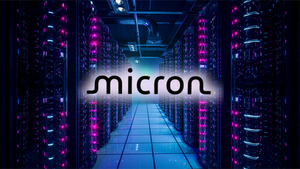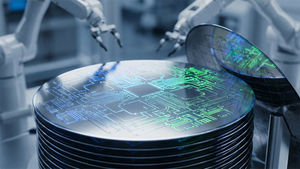
The global semiconductor industry finds itself at a critical juncture, grappling with a severe and escalating talent shortage that threatens to derail the very technological advancements it underpins. This deficit of skilled workers, ranging from highly specialized engineers in cutting-edge chip design to precision manufacturing technicians, has been significantly worsened by the unprecedented and insatiable demand for Artificial Intelligence (AI) chips. As the "AI Supercycle" accelerates, the industry's capacity to innovate and produce the foundational hardware for the future of AI is increasingly challenged, posing a profound risk to global supply chains and economic stability.
This crisis is not merely a bottleneck but a foundational challenge impacting the pace of AI innovation and the industry's ability to meet the computational demands of an AI-driven world. With revenues projected to soar past a trillion dollars by 2030, the semiconductor sector urgently requires an estimated one million additional skilled workers globally within the next five years. However, current educational pipelines and workforce development initiatives are falling far short, creating a widening gap that could stifle the next wave of technological progress.
The Intricate Web of Semiconductor Talent Shortages
The escalating demand for AI chips, such as Graphics Processing Units (GPUs), Application-Specific Integrated Circuits (ASICs), and High-Bandwidth Memory (HBM), has pushed the boundaries of manufacturing capabilities and intensified the talent crunch across several critical domains.
In chip design, the industry requires engineers with deep expertise in areas like Very Large Scale Integration (VLSI) design, embedded systems, and AI chip architecture. The shift towards different data representations (integers, floating points, or custom formats) in AI chips introduces new layers of complexity in design and verification, necessitating a new breed of "AI-native" engineers capable of effectively collaborating with and managing advanced AI design automation tools. While AI tools are beginning to augment human capabilities in design, the human intellect and specialized skills required to oversee and innovate these processes remain irreplaceable. The U.S. alone projects a need for 88,000 engineers by 2029, yet only a fraction of engineering graduates are entering the semiconductor field annually.
Manufacturing, the other critical pillar, faces an equally daunting challenge. Producing advanced AI chips requires high-precision engineering and sophisticated process technology expertise. New fabrication facilities (fabs), which cost tens of billions of dollars and take years to become operational, risk underutilization and delays without a sufficiently trained workforce. Even with massive government investments like the U.S. CHIPS and Science Act and the pending EU Chips Act, the physical infrastructure alone is not enough. The demand for technicians is particularly acute, with projections of up to 75,000 needed by 2029, while the annual influx of new technicians is alarmingly low. Companies like Samsung (KRX: 005930), which are aggressively ramping up production for AI chips, are experiencing significant hurdles in attracting and retaining skilled employees in this fiercely competitive market. Furthermore, the integration of AI into manufacturing processes itself demands new skills in areas like data analytics, smart manufacturing, and AI system management.
This current scenario differs significantly from previous tech booms. While past cycles saw talent demand increase, the unique convergence of geopolitical competition, the sheer complexity of AI hardware, and the rapid pace of technological evolution has created a perfect storm. The specialized nature of semiconductor engineering and manufacturing means that reskilling from other tech sectors is often insufficient, requiring fundamental educational and training reforms that take years to bear fruit.
Competitive Implications for Tech Giants and Startups
The escalating talent shortage in the semiconductor industry has profound competitive implications, creating both opportunities and significant hurdles for AI companies, established tech giants, and burgeoning startups. Companies that can secure and retain top-tier talent in chip design and manufacturing stand to gain a substantial strategic advantage in the race for AI dominance.
Tech giants like NVIDIA (NASDAQ: NVDA), a dominant force in AI hardware with its GPUs, and Intel (NASDAQ: INTC), which is aggressively re-entering the foundry business and developing its own AI accelerators, are at the forefront of this talent war. These companies possess the financial muscle to offer competitive salaries and benefits, enabling them to poach talent from smaller firms and invest in internal training programs. However, even their vast resources are stretched thin by the unprecedented demand, leading to intense internal competition for critical roles. The ability to design and manufacture next-generation AI chips efficiently is directly tied to market positioning and the capacity to deliver innovative AI solutions, from data center AI to edge computing. Similarly, companies like TSMC (NYSE: TSM), the world's largest dedicated independent semiconductor foundry, are crucial to the AI supply chain. Their ability to expand and operate new fabs hinges entirely on a robust talent pipeline, directly impacting the availability of advanced AI chips for the entire industry.
For smaller AI labs and startups, the talent crisis presents a significant disruption. Without the deep pockets of tech giants, attracting and retaining highly specialized chip designers and manufacturing experts becomes an existential challenge. This could stifle innovation at the grassroots level, as promising AI hardware concepts struggle to move from design to production due to a lack of skilled personnel. It also creates a competitive imbalance, potentially consolidating power among the few companies capable of navigating this talent landscape. The shortage also impacts the development of specialized AI chips for niche applications, as the cost and time associated with custom silicon design escalate due to limited talent. This could lead to a reliance on more generalized hardware, potentially limiting the efficiency and performance of bespoke AI solutions.
The market positioning of companies is increasingly defined not just by their intellectual property or capital, but by their human capital. Those that invest strategically in workforce development, establish strong university partnerships, and foster an attractive work environment are better positioned to weather the storm. Conversely, those that fail to address their talent gaps risk falling behind, impacting their ability to compete in the rapidly evolving AI hardware market and potentially disrupting their existing product roadmaps and service offerings.
The Broader AI Landscape and Future Trajectories
The semiconductor talent crisis is not an isolated incident but a critical symptom of the broader trends shaping the AI landscape. It underscores the foundational importance of hardware in the AI revolution and highlights a significant vulnerability in the global technological infrastructure. This crisis fits into a larger narrative of increasing complexity in AI systems, where software advancements are increasingly reliant on corresponding breakthroughs in hardware performance and manufacturing capability.
The impacts are far-reaching. Economically, delays in fab operations, inefficiencies in yield, and slower innovation cycles could cost the global economy billions, undermining the efficacy of massive global investments in the semiconductor industry, such as the U.S. CHIPS Act and the EU Chips Act. These legislative efforts aim to onshore or friendshore semiconductor manufacturing, but without the human talent, the physical infrastructure remains an empty shell. Geopolitically, the talent shortage exacerbates existing vulnerabilities in an already fragile global supply chain, which is heavily concentrated in a few regions. This concentration, coupled with talent scarcity, makes the supply chain susceptible to disruptions, posing national security concerns by affecting the ability to produce critical components for military and defense applications.
Comparisons to previous AI milestones reveal a unique challenge. While past breakthroughs, such as the development of deep learning or transformer models, were primarily software-driven, the current phase of AI demands an unprecedented synergy between software and highly specialized hardware. The talent crisis in semiconductors is, therefore, a direct impediment to realizing the full potential of next-generation AI, from truly autonomous systems to advanced scientific discovery. It's a reminder that even the most sophisticated algorithms are ultimately constrained by the physical limits of their underlying hardware and the human ingenuity required to create it.
Charting the Course: Future Developments and Challenges
The path forward for addressing the semiconductor talent crisis, exacerbated by AI's relentless demand, will require a multi-faceted and concerted effort from industry, academia, and governments. Near-term developments will likely focus on aggressive talent acquisition strategies, including international recruitment and highly competitive compensation packages, as companies scramble to fill critical roles.
In the long term, however, sustainable solutions must emerge from fundamental changes in education and workforce development. This includes significant investments in STEM education at all levels, from K-12 to postgraduate programs, with a particular emphasis on electrical engineering, materials science, and manufacturing technology. Industry-academic partnerships are crucial, fostering curricula that align with industry needs and providing hands-on training opportunities. Apprenticeship programs, technical colleges, and vocational training initiatives will become increasingly vital to build the technician workforce required for advanced manufacturing facilities. Experts predict a shift towards more modular and automated design processes, potentially leveraging AI itself to augment human designers, but this still requires a highly skilled workforce capable of developing, managing, and troubleshooting these advanced systems.
Potential applications and use cases on the horizon include the development of more efficient AI-driven design tools that can automate parts of the chip design process, thereby amplifying the productivity of existing engineers. Furthermore, AI could play a role in optimizing manufacturing processes, reducing the need for manual intervention and improving yields, though this requires new skills for its implementation and maintenance. Challenges that need to be addressed include the perception of the semiconductor industry as less "glamorous" than software-centric tech roles, the lengthy and rigorous training required, and the need to create more diverse and inclusive pathways into the field. What experts predict will happen next is a continued fierce competition for talent, but also a growing recognition that this is a systemic issue requiring systemic solutions, leading to greater public-private collaboration on workforce development initiatives.
A Crucial Juncture for the AI Era
The escalating demand for AI chips and the resulting exacerbation of talent shortages in the semiconductor industry represent a critical juncture for the entire AI era. The key takeaway is clear: the future of AI is not solely dependent on algorithmic breakthroughs but equally on the human capital capable of designing, manufacturing, and innovating the hardware that powers it. This crisis underscores the profound interconnectedness of technological progress and human expertise.
The significance of this development in AI history cannot be overstated. It highlights a fundamental vulnerability in the rapid advancement of AI, demonstrating that even with immense capital investment and groundbreaking software innovations, the physical limitations imposed by a lack of skilled personnel can become a decisive bottleneck. It is a stark reminder that the "AI Supercycle" is built on the tangible foundation of silicon, crafted by highly specialized human hands and minds.
In the coming weeks and months, observers should watch for intensified efforts by major semiconductor companies and governments to attract and train talent, potentially through new incentive programs, international partnerships, and educational reforms. The success or failure in addressing this talent crisis will not only determine the pace of AI development but also shape the geopolitical landscape and the economic competitiveness of nations. The long-term impact will dictate whether the promise of AI can be fully realized or if its potential will be constrained by the very infrastructure meant to support it.
This content is intended for informational purposes only and represents analysis of current AI developments.
TokenRing AI delivers enterprise-grade solutions for multi-agent AI workflow orchestration, AI-powered development tools, and seamless remote collaboration platforms.
For more information, visit https://www.tokenring.ai/.





